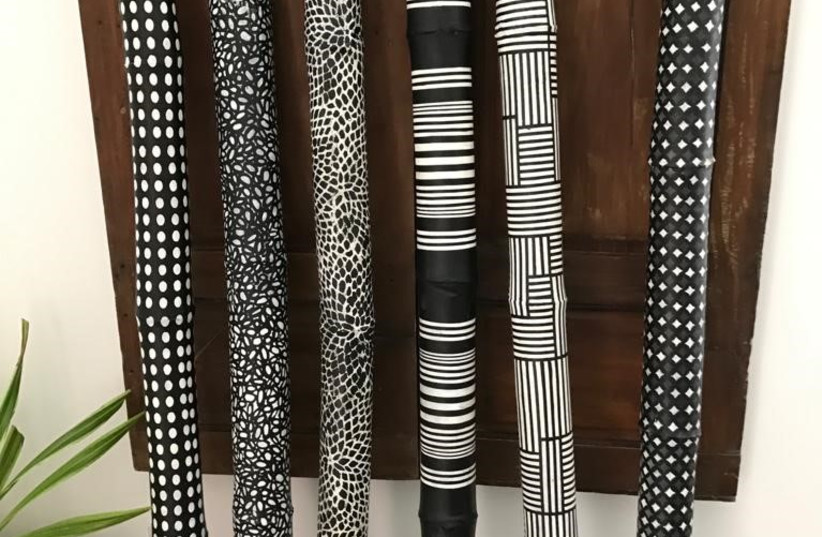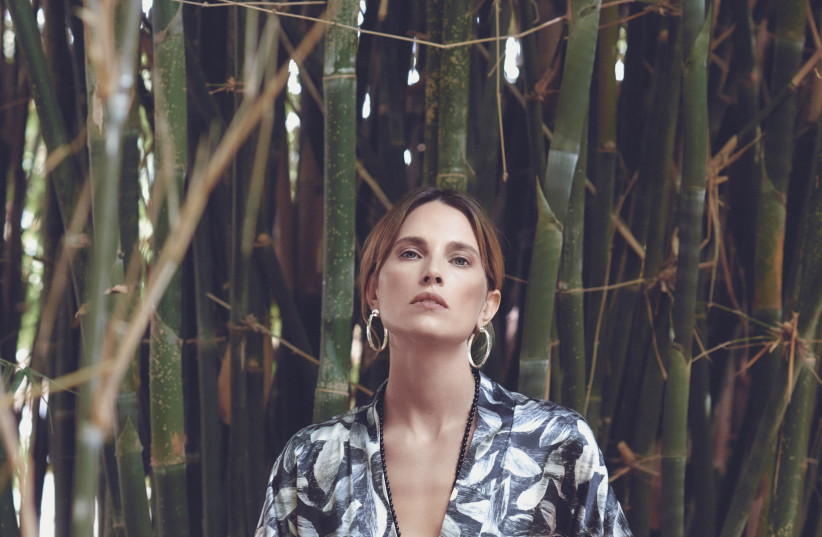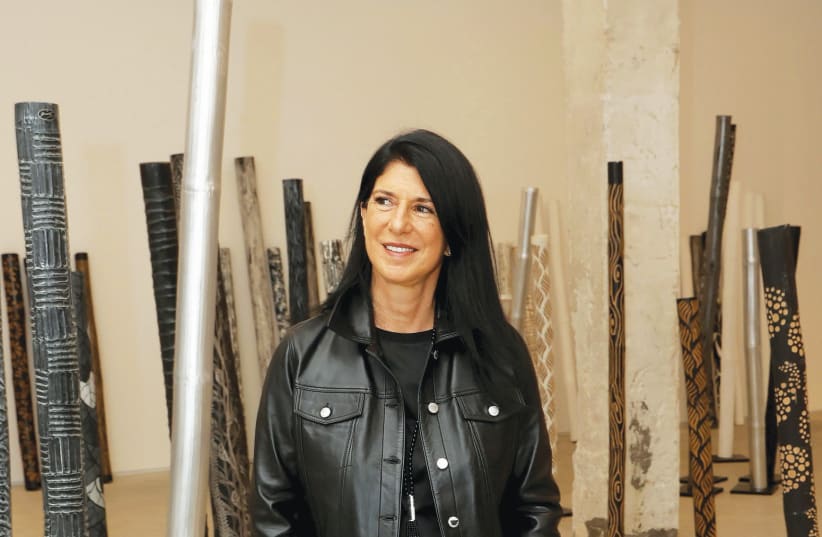“I have worked in the fashion industry for more than 40 years. During that time I had to design according to budget and other demands – to design a T-shirt that would not cost the end-customer more than four pounds, to chase the latest trends and to be ahead of everybody. Now I design for myself. I create my own art, I follow my own beliefs and I love it,” says designer Anat Heifetz about her new private label Kawayan.
Heifetz, 65, is a mother of three and a grandmother of two. Born and raised in Israel, she studied fashion at the Shenkar College of Engineering and Design, where she later became a teacher, and worked with many top Israeli designers before opening her own company.
She has designed uniforms for El Al, the Dan hotel chain, Sheraton and even the New York Plaza hotel. She has designed for local brands such as Gottex and international brands such as Tommy Hilfiger and Calvin Klein, online moguls such as Asos and international chains such as Primark, as well as many French, Spanish and Swedish brands.
Now Heifetz has changed direction and launched her own capsule collection inspired by the time she spent in the Philippines.
“We lived in Manila and we traveled a lot on the weekends. I saw stacks of bamboo lying by the roadsides,” she continues. “They use bamboo to build everything – from furniture to dishes, and even complete homes – walls, roofs – the lot.


“The stacked bamboo lying everywhere reminded me of stacks of used fabric rolls I used to see in factories. They are tossed aside after the fabric is gone, and they just lay there in the corner, naked and shameful. I wanted to dress them – so I started painting patterns on the bamboo. This is how everything started,” recalls Heifetz.
“I asked a coworker in the university where I was teaching fashion, if they knew of an available studio. She told me there was a studio in a community center, located in a run-down neighborhood, where people came and did their own work. That suited me perfectly.
“I started painting there with local artists. One of the artists introduced me to Nestor, a sweet guy from a village where they make artifacts from bamboo. We became friends and started to work together. We worked for days – I drew the pattern on the bamboo and he engraved it. It is very hard to engrave bamboo and he is fantastic. Before I knew what I was doing I had a collection of 400 bamboos,” she says.
With the painted bamboos stacking up in her kitchen and living room, friends started to take notice. “One day at a function, the Israeli ambassador asked me if I would be willing to show my work in an event held by the embassy. I agreed but asked that the location will be respectable,” she says.
The collection of the painted and carved bamboos, as well as painted bamboo mats, eventually became a solo exhibition at the Ayala Museum of Modern Art in Manilla. “It was amazing. I was so honored. It is the national museum and it is a big deal,” she smiles bashfully. The exhibition was planned to move to another museum in the Far East, but things did not go according to plans.
“My daughter was about to have a baby and I traveled to Israel to be with her. I thought I’d be here for a few weeks and go back, so I left everything as it was, even my slippers were left by the bed. Then corona happened and I couldn’t go back. Months went by and I ended up packing my home via zoom. I shipped my bamboos here and continued to work in my kitchen.
“I like to work at night. I sit and paint the small intricate patterns by hand. It is very meditative,” she tells me when we look at the bamboos, one more beautiful than the other. “Then I realized that what I was creating on the bamboos were fabric designs. So I decided to try and print them on fabric,” she recalls.
THIS IS how her new brand Kawayan (“bamboo” in Filipino) was born.
With many professional and personal contacts in the global fashion industry, Heifetz managed to get the best materials and workmanship available. “They are all long-time colleagues and friends, and they agreed to produce very small batches for me. So I can create a few items from each design using only the best materials, such as silk, leather, wool and silver. I can have the finish and details done by hand and I just do whatever I feel like,” she says smiling. “I play and I follow my heart.
“I have always believed in timeless design. I believe that you should only wear clothes that make you feel beautiful and happy. I don’t think you need a new outfit every time you get dressed. If you buy a well-made and well-designed piece, one that fits you and makes you feel and look beautiful, why not wear it many times? I always bought one or two designer items every year, even when I had no money, and then I wore them for years,” explains Heifetz.
Her beautiful designs include clothes, hats, accessories such as silver jewelry, bags, hats and more. “I designed clothes. Then if you have an outfit you need a bag, or maybe a hat and scarves… so I designed them.” That led to jewelry, and houseware items, such as ceramics. And then there’s her art – the exquisite hand-carved and hand-painted bamboos and bamboo mats.


Her creations are timeless and sublime, and the attention to detail is unprecedented – from handmade silver buttons with the Kawayan logo, to hand-sewn edges of the silk scarves bearing the artist’s signature; from lacquered bamboo boxes made according to her design in Vietnam, in which she packs the scarves, to specially-produced silver handles for her bags. The collection, much to her amazement, is selling fast.
“I was always very lucky, I never needed to promote myself. My whole career I just went from one project to another. People who worked with me took me with them to the next job.
“I am not used to speaking about myself, and I don’t like it, but I love the creative process. I did it for others for many years; now I do it for myself and I do not limit myself. If I want a blanket made from silk and pure wool – and I know it will have to be expensive – I do it. I make only a few pieces from each design and the reaction is amazing. Some of the designs are already gone.
“All my life I chased trends and now I do the opposite. My grandmother used to tell me we were not rich enough to buy cheap. I agree that this is part of what is wrong with the fashion industry.
“We produce too much and throw out too much. People feel that they need to wear something new each time they go out. People tell me they need something for an event. But what is the point of buying something and wearing it once? If you love it and it makes you happy – wear it again and again.
“I loved working with manufacturers around the world, but I think that we need to stop producing and buying so much. When I started we used to make four collections a year. Then the big brands started to produce 10 or 12 collections every year,” she recalls. “Now it is my time to make amends.”
For more details about the collection: Kawayancollection.com
